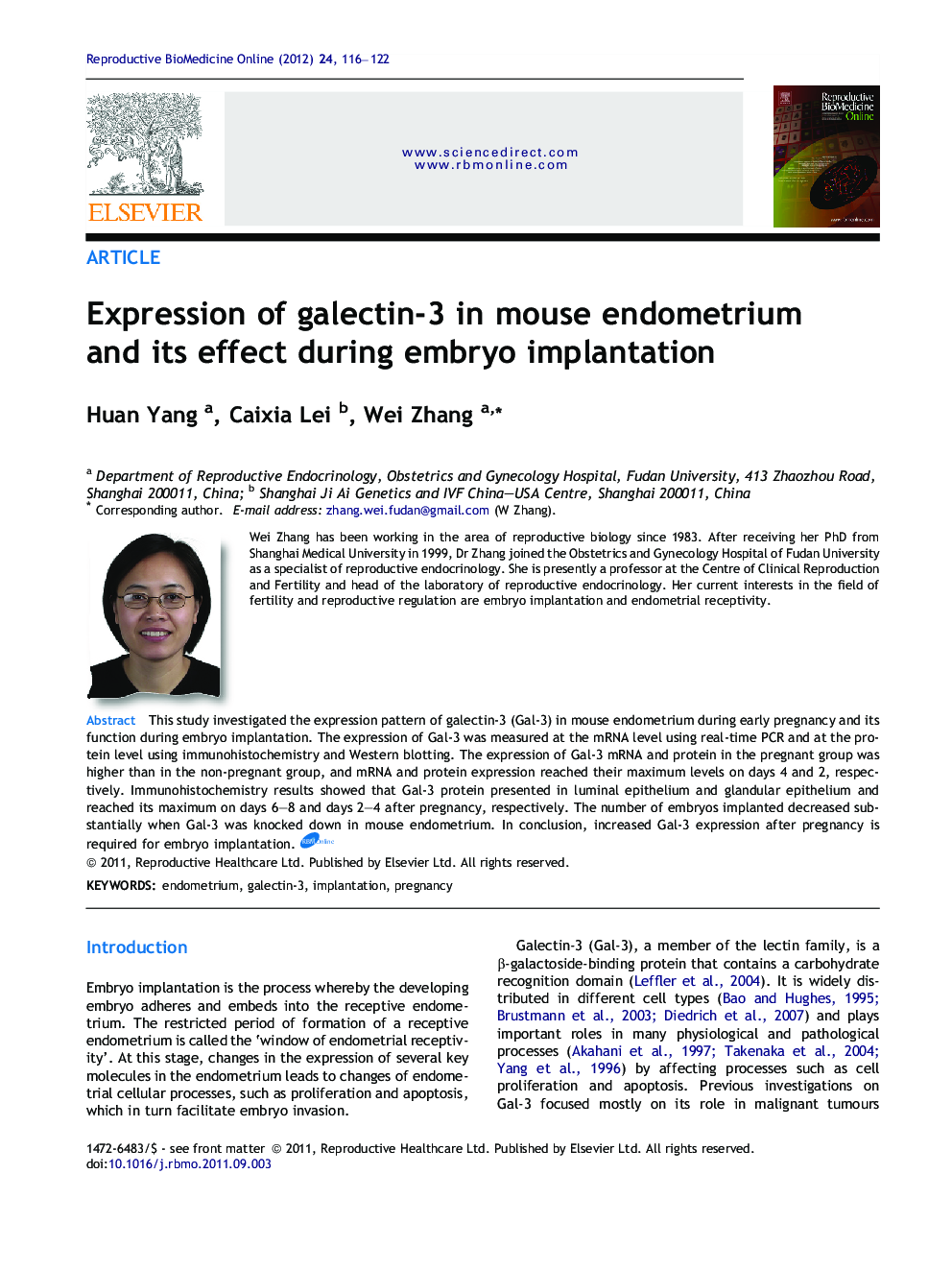| Article ID | Journal | Published Year | Pages | File Type |
|---|---|---|---|---|
| 3970630 | Reproductive BioMedicine Online | 2012 | 7 Pages |
This study investigated the expression pattern of galectin-3 (Gal-3) in mouse endometrium during early pregnancy and its function during embryo implantation. The expression of Gal-3 was measured at the mRNA level using real-time PCR and at the protein level using immunohistochemistry and Western blotting. The expression of Gal-3 mRNA and protein in the pregnant group was higher than in the non-pregnant group, and mRNA and protein expression reached their maximum levels on days 4 and 2, respectively. Immunohistochemistry results showed that Gal-3 protein presented in luminal epithelium and glandular epithelium and reached its maximum on days 6–8 and days 2–4 after pregnancy, respectively. The number of embryos implanted decreased substantially when Gal-3 was knocked down in mouse endometrium. In conclusion, increased Gal-3 expression after pregnancy is required for embryo implantation.Galectin-3 (Gal-3), a β-galactoside-binding protein, plays important roles in many physiological and pathological processes. Previous studies on Gal-3 mainly focused on its role in cancer cells, its role in embryonic implantation is largely unknown. Although some in-vitro studies suggested that it might be a factor related to endometrial receptivity, it needs further investigation, such as identifying the importance of Gal-3 in vivo. In this paper, we detected Gal-3 expression in mice uterus at the peri-impanation stage and further identified the role of Gal-3 in embryonic implantation by injecting silencing RNA into uteri in vivo. Our study indicated that Gal-3 was differently expressed in mice glandular epithelium and stromal cells at the time of implantation. The expression of Gal-3 was maximum on days 2–6 of pregnancy, which is the crucial period of embryonic implantation. Knock-down of Gal-3 significantly down-regulated the implanted embryos in mice. Our results indicate that Gal-3 is necessary for the embryonic implantation and provide new hints on the cause of infertility due to a defective endometrium.
